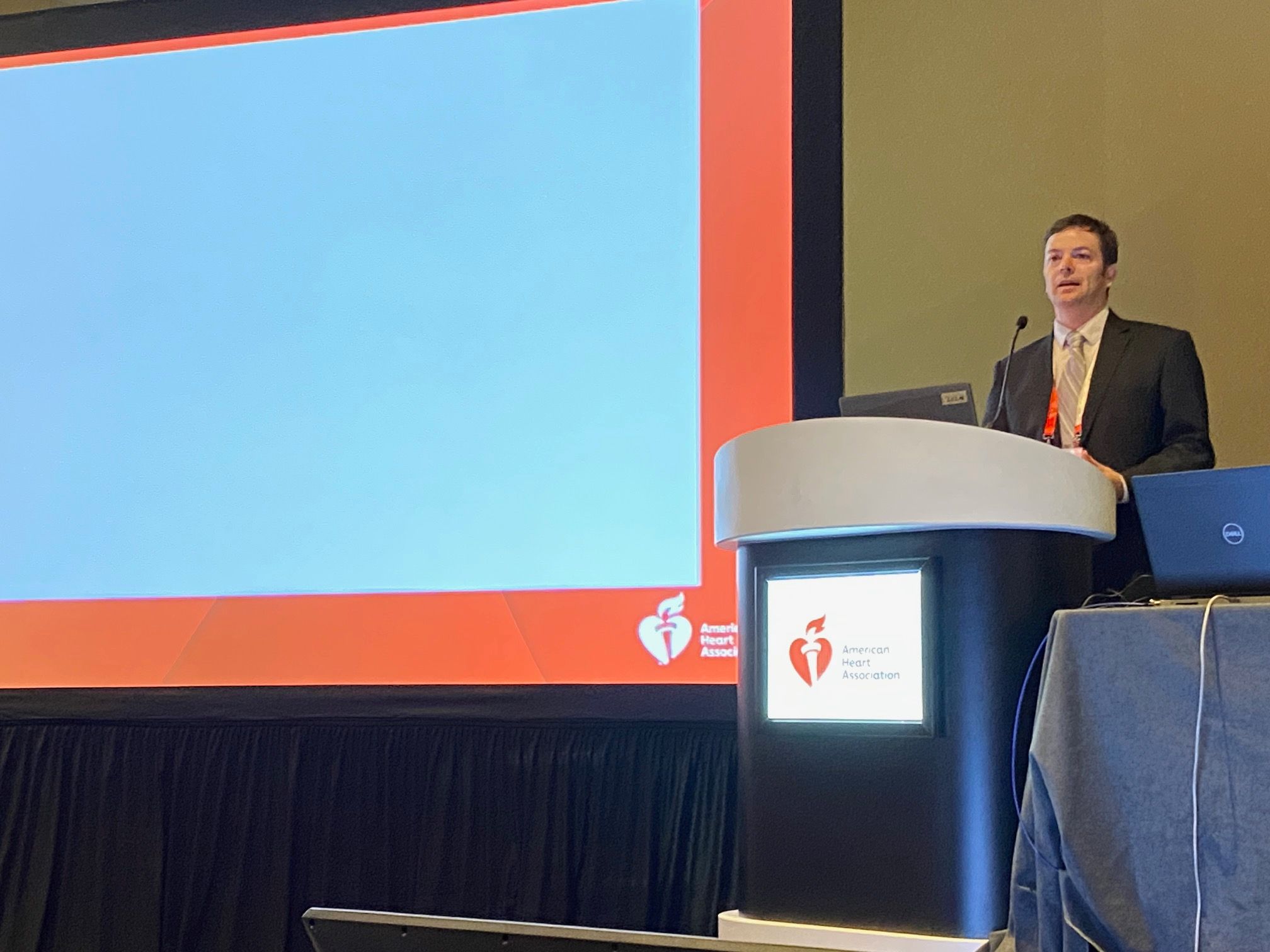Improving heart failure care beyond the hospital | AHA Scientific Sessions
Healthcare leaders stressed the importance of taking a more proactive approach to improving care before patients end up in the hospital for a lengthy and costly stay.
Christopher Babiuch of Cleveland Clinic discusses taking a population health approach to managing patients with heart failure at the American Heart Association Scientific Sessions. (Photo: Ron Southwick)

PHILADELPHIA - With heart failure carrying such high costs and high morbidity, healthcare leaders are stressing the importance of providing more care outside the hospital.
Increasingly, health systems are looking at ways to expand preventive care and the ability to manage patients before they end up needing a costly hospital stay.
Healthcare leaders and researchers discussed ways to provide more heart care beyond the four walls of the hospital at the American Heart Association Scientific Sessions over the weekend.
Christopher Babiuch is a family medicine doctor at the Cleveland Clinic, where he is also the medical director for specialty integration for the organization’s value-based operations. In a session Saturday, he talked about tackling heart failure in terms of population health management.
“Heart failure is perfect for a population health approach because it's touching so many different things, and really is requiring us to have a paradigm shift from how we've been thinking,” Babiuch said.
He added that it involves moving “from the reactive approach and the patients are in front of us, to seeing how they're doing over the continuum of care, and really be proactive.”
Babiuch discussed the use of remote patient monitoring to track patients with heart failure, but also monitoring patients across the continuum of care.
“Primary care is a significant workforce that is available to be utilized along with cardiology to do this work,” he said.
He also stressed the value of aligning primary care in cardiology and managing heart failure patients.
“In primary care, what we have been doing to really align in heart failure care is really to be kind of the key place where we proactively co-manage heart failure, comorbidities,” Babiuch said. “We want to be in charge of managing that blood pressure, cholesterol.”
In addition, the system is working to ensure that primary care physicians are adhering to guideline-directed medication therapy in terms of proper treatment for patients with heart failure, and are turning to cardiology teams for help if necessary, he said.
At Cleveland Clinic, the population health infrastructure is centered around the primary care providers, Babiuch said.
Babiuch said Cleveland Clinic has developed registries so physicians can easily see which patients have heart failure and uncontrolled hypertension.
He said they’ve created a calendar so it’s possible to run a list of patients with heart failure and high blood pressure and do some outreach.
“I can pull that list up at any time that I want to take a look at those patients and decide what can I do to help them and get in touch with them, pull them back in, adjust the medication, and really make an impact there,” Babiuch said. For example, he said they could devote some time in the first week of a month for patient outreach efforts.
At Cleveland Clinic, the population health infrastructure is centered around the primary care providers, Babiuch said. But the effort also involves pharmacists and information technology infrastructure to assess performance.
Cleveland Clinic has also developed scores for patients to identify individuals that can benefit from interventions. The scores are put in the electronic health records, and can be useful for patients and providers.
“This is available to us, one, in a registry where we can proactively go seek out these patients on our heart failure registry to say, ‘Hey, we've got an opportunity to pull this patient,’” Babiuch said. “But also more importantly, how am I performing? How am I doing with this? Because as physicians, we're all competitive.”
In addition to utilizing technology, Babiuch stressed the importance of outreach to heart failure patients to make sure they are seeing their cardiologists regularly, and aren’t going six months or a year without being seen.
He also talked about the importance of working with primary care providers and driving home the role they can play in improving care for patients with heart failure.
“There are really substantial interventions to drive improvements in morbidity and mortality and that they are also available to be able to make these adjustments whenever they see the patient for a cough or cold or whatever,” Babiuch said.
Babiuch encouraged other clinicians and health systems to look at ways to reach out to patients to give them more (and better) care before they require a lengthy hospital stay.
“We know that heart failure is an extremely high-cost, high-morbidity condition,” he says.
“These are things that if we do well in the outpatient space, we can drive down admissions and need to do that,” Babiuch says.
Healthcare leaders: Prepare for a very different HIPAA security rule | Viewpoint
April 20th 2025The proposed changes to the HIPAA Security Rule are significant. Executives and boards need to prepare as the days of voluntary compliance end and a new era where leaders are held personally accountable emerges.